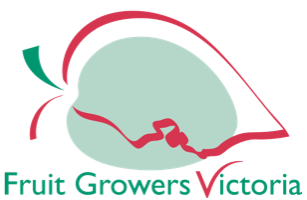Horse Friendly Trees
The decision behind choosing the right trees for horse paddocks and enclosures is more than just selecting something that is big and wide for shade. A huge consideration is the potential of certain trees to poison horses when foliage, branches, flowers or nuts are mistaken as food.

When there may be a lack of food, horses can have the tendency of munch on trees. This makes the decision around tree selection very important. Fruit or nut-bearing trees can contribute to colic in horses while there are other trees that are toxic enough to sicken or kill.
Trees not suitable for horses include:
- Acer rubrum (Canadian Maple), Acer saccharum (Sugar Maple) Acer negundo (Box Elder) and their hybrids – These maples should be avoided as they produce cyanide in their leaves which suffocates animals by blocking oxygen transport via the red blood cells. Ingestion causes lethargy, discoloured urine and darkened gums, and death.
- Aesculus (Horse Chestnut) - The toxin is present in the nuts, leaves or new growth. Symptoms of poisoning include depression, muscle tremors or spasms, lack of coordination, colic, pain and paralysis.
- Juglans nigra (Black walnut) - The bark, nuts, roots, pollen and fallen leaves contain juglone, a compound which is toxic to horses.
- Melia azedarach (White Cedar) - This tree should not be planted where dogs, livestock and horses can graze the seeds or leaves. However, many birds are able to eat the seeds, which may have helped the tree become widespread and considered a pest in some areas.
- Oleander (Nerium oleander) – This tree or large shrub contains cardiotoxic compounds that are poisonous to humans, dogs, cats, horses, cattle, sheep, goats, llamas and birds. The primary toxic agent, oleandrin, causes heart arrhythmias that lead to cardiac arrest and death. In horses, as little as 30 grams of green leaves can be lethal.
- Prunus (all Cherry, Peach and Plum trees) - These fruits are safe when eaten by humans, however, there are cyanogenic glycosides in the leaves, shoots, bark and pits of the fruit that can lead to poisoning in horses.
- Quercus (Oak) – These trees pose a threat with acorns, buds, leaves and blossoms all being toxic to livestock, including horses. Oak poisoning causes colic and bloody diarrhoea in horses as well as damage to kidneys. It is advised to stay well away from this species entirely.
- Robinia pseudoacacia (Black Locust) - The bark, seeds, leaves and twigs of this tree is toxic to humans, cattle, poultry, sheep, and horses.
- Taxus (English yew, Canada yew and Japanese yew - and their hybrids) - The needles and seeds of these trees are highly poisonous to horses, cattle, sheep and goats
- Privet – Privet leaves and berries are poisonous to horses and are known to cause gastrointestinal and nervous system distress, causing convulsions, paralysis, and even death. Eating small quantities of Privet can kill a horse.
It is most likely that horses will not want to eat any sort of trees unless there is very little else for them to graze on. Most horses will avoid poisonous trees and plants because they are unpalatable and have a bitter taste and/or smell. But during periods of drought or when pastures are overgrazed, animals just might begin to investigate the undesirable ones. And then you probably get a few horses that simply nibble on anything. It is unclear how much of any tree is detrimental to horses, so our recommendation is to do your research, talk to other horse owners and seek advice before planting from horse-related associations, to determine the degree of risk based on your situation.
Now the good news. There are alternatives for boundary and shading pasture trees that are big and beautiful and most importantly, non-toxic.
Below is a mix of deciduous and evergreen native trees to inspire your decision-making.
Receive all the latest news, product information, collections, projects, tips and special offers straight to your inbox each month or so.
Receive all the latest news, product information, collections, projects, tips and special offers straight to your inbox each month or so.
Find a Tree
With more than 400 trees in our library we can help you find the perfect tree for your next project.
Ask a question
We're here to help if you need any advice on selecting the perfect tree for your next project.
Newsletter
Receive all the latest news, product information, collections, projects, tips and special offers straight to your inbox each month or so.
Treefinder can help you identify the perfect tree for your next project!
With over 400 tree varieties for review, the Treefinder app enables you to conveniently browse and compile a list of trees suitable for a number of common landscaping uses - from attracting birds to creating a formal screen or hedge. By selecting desired size, foliage, and a few categories, Treefinder opens up a world of possibilities.
Once you've found the perfect tree you can click through to our website for more information, availability and a quote.

We are specialists in the environmentally sustainable production of premium quality advanced landscaping trees and screens.
For more than 48 years Speciality Trees has been a leader in the production and supply of advanced environmentally sustainable, containerised landscape trees for local government, the landscaping industry and retailers.
Learn more

















